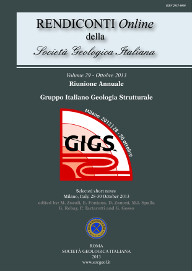
The structural complex of Montestrutto (Austroalpine Domain, Western Italian Alps) as an opportunity for dissemination of Earth Sciences
Irene Bollati (a), Michele Zucali (a) & Manuela Pelfini (a)
(a) Department of Earth Sciences , Università degli Studi di Milano, Via Mangiagalli, 34, 20133, Milan, Italy. E-mail: irene.bollati@unimi
DOI: https://doi.org/
Volume: 29/2013
Pages: 9-12
Abstract
In the framework of Earth Science dissemination, structural geology is a topic that may result difficult at a first sight. Anyway the choice of an effective contact point between the educational target and the topic of interest may help. The importance of dissemination of structural geology in Northern Italy is surely linked with the presence of one of the most known mountain ranges of the world, the Alps, that attracts every year several tourists interested in activities like, hiking, climbing and alpinism. Since field activities, focusing on direct experimentation on landscape geological and geomorphological features, have been recognized as a powerful tool in Earth Sciences dissemination, and due to the particular context of this educational proposal, sport climbing has been chosen as the ideal way for transmitting to common people the basic concept of structural geology. This sport activity has been demonstrated to be effective also in other contexts (e.g. psychology, medicine).
In order to find the ideal study site, educational exemplarity and geohistorical importance, that determine scientific value of the site, together with cultural value and accessibility have been considered. These features, that are basically adopted in the geo-geomorphosites evaluations, characterize one of the most important and famous sites for climbing in the Western Italian Alps, located in the Eclogitic Micaschist Complex of the Austroalpine Domain: Montestrutto climbing area (Piemonte, Italy).
The research has been articulated in different steps. Reconstruction of the deformation stages at local scale allow to acquire data for analyzing five routes of different difficulties in order to find interesting correspondences among routes difficulty and geological and geomorphological features of the sport climbing wall. The structuring of the educational activity include pre- and post-experience tests to test the improvement of knowledge of concepts like Alpine orogeny, different styles of deformation, exogenous modeling and the duration of geological and geomorphological processes.
Keywords
Get Full Text